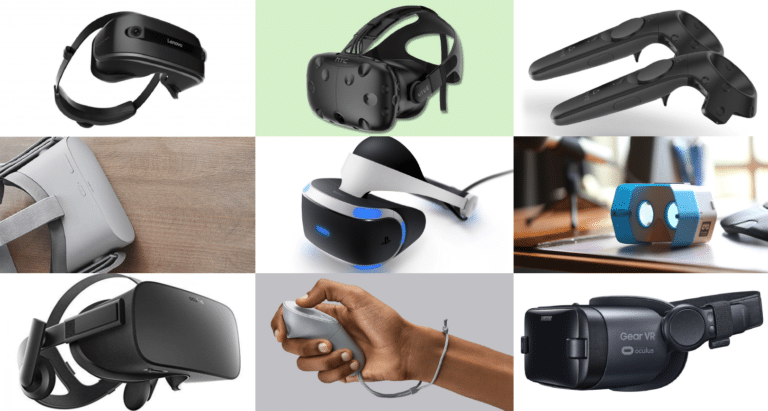
This post is adapted from ARtillry’s latest Intelligence Briefing, VR Usage & Consumer Attitudes. It includes some of its data and takeaways, including original survey research. More can be previewed here and subscribe for the full report.
When examining things that VR users want, it’s all about content. 56 percent said they want more content, and 50 percent want better quality content – the top two responses. This confirms what ARtillry has examined several times: Content is king in VR just like it is in most other mediums.
But the challenge today is a classic “chicken & egg” dilemma for devices and content. Put briefly, there isn’t enough content to compel mass adoption of VR hardware; and there isn’t enough of an installed hardware base to compel content creators to invest time and money.
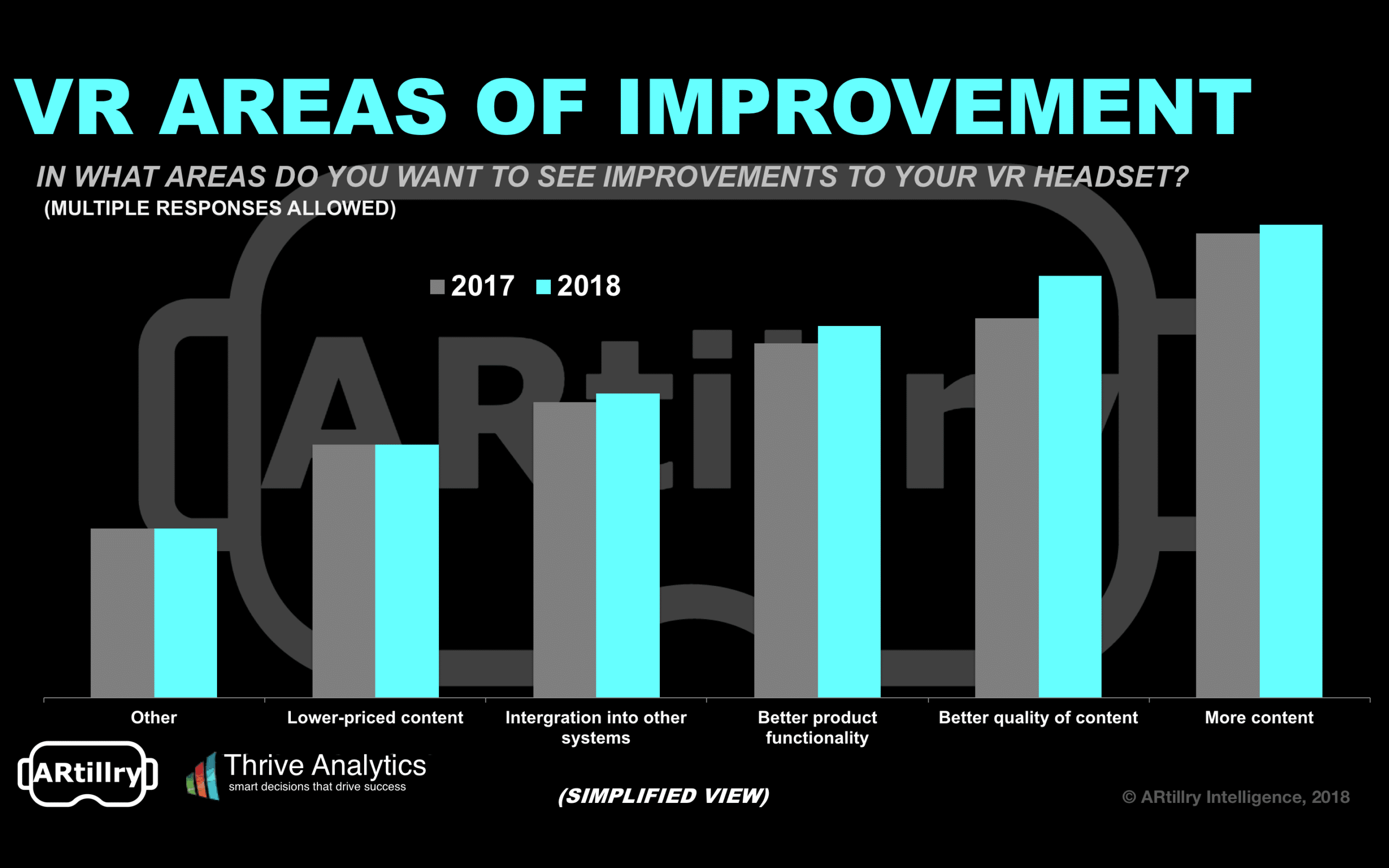
We’ll see this dilemma naturally alleviate over time, as more content is created, and more devices are sold, in a sort of slow-moving step function. Meanwhile there’s a clear hunger for content. This should signal a gap in VR’s value chain, and a business opportunity for potential entrants.
Oculus Go could help accelerate that step function. It enters the market with more than 1,000 compatible apps, due to its backwards-compatibility with Gear VR. This will not only help its own appeal and competitive positioning but attract more mainstream users into VR in general.
Demand Signals
Another useful exercise is to speculate the VR applications and activities that are most appealing on hypothetical levels. This question was posed to the entire sample (users and non-users) and returned telling results. The high-level takeaway is that it’s once again all about content.
The top result for desired VR activities was watching movies (47 percent), followed by other forms of lean-back entertainment (46 percent), interactive video games (44 percent), exploring parts of the world (41 percent), watching sports (29 percent) and test-driving a car (24 percent).
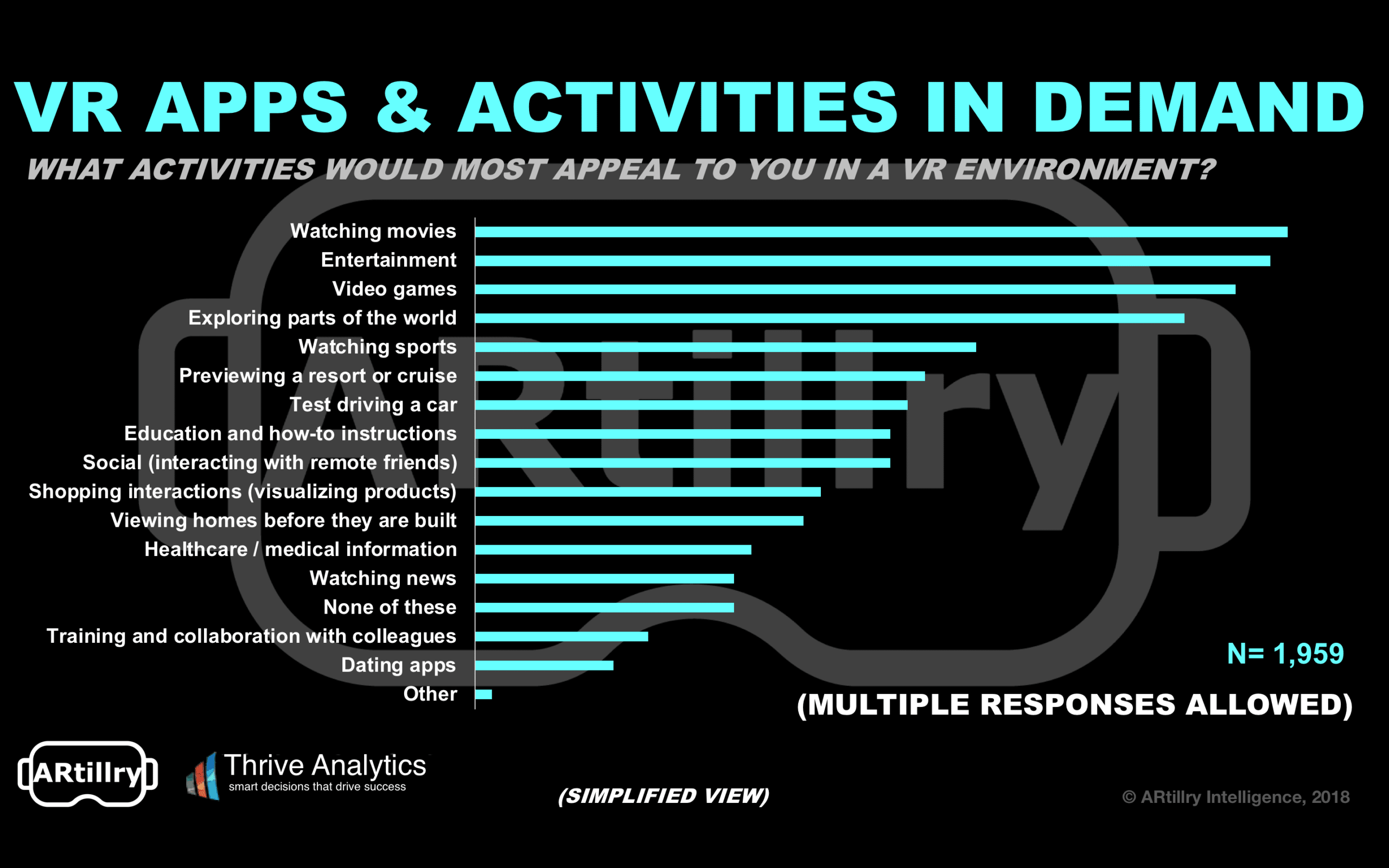
Interestingly, these results are a mix of “native” VR activities (fully immersive 3D) and standard 2D content that has been brought into a VR environment (such as watching movies). The fact that the latter represents the most popular activity is telling of the very early stage in which VR remains.
As we’ve examined, eventual VR successes will design native experiences. In other words, they can only exist in VR. They’ll apply unique capabilities to immerse users in 3D experiences. This will be a learning curve for developers, just like native smartphone app design was.
Meanwhile, activities that ARtillry believes are under-rated in these results include employee training and collaboration, social interaction, education and shopping interactions. These are areas we project strong long-term use cases for VR, despite lower reported interest today.
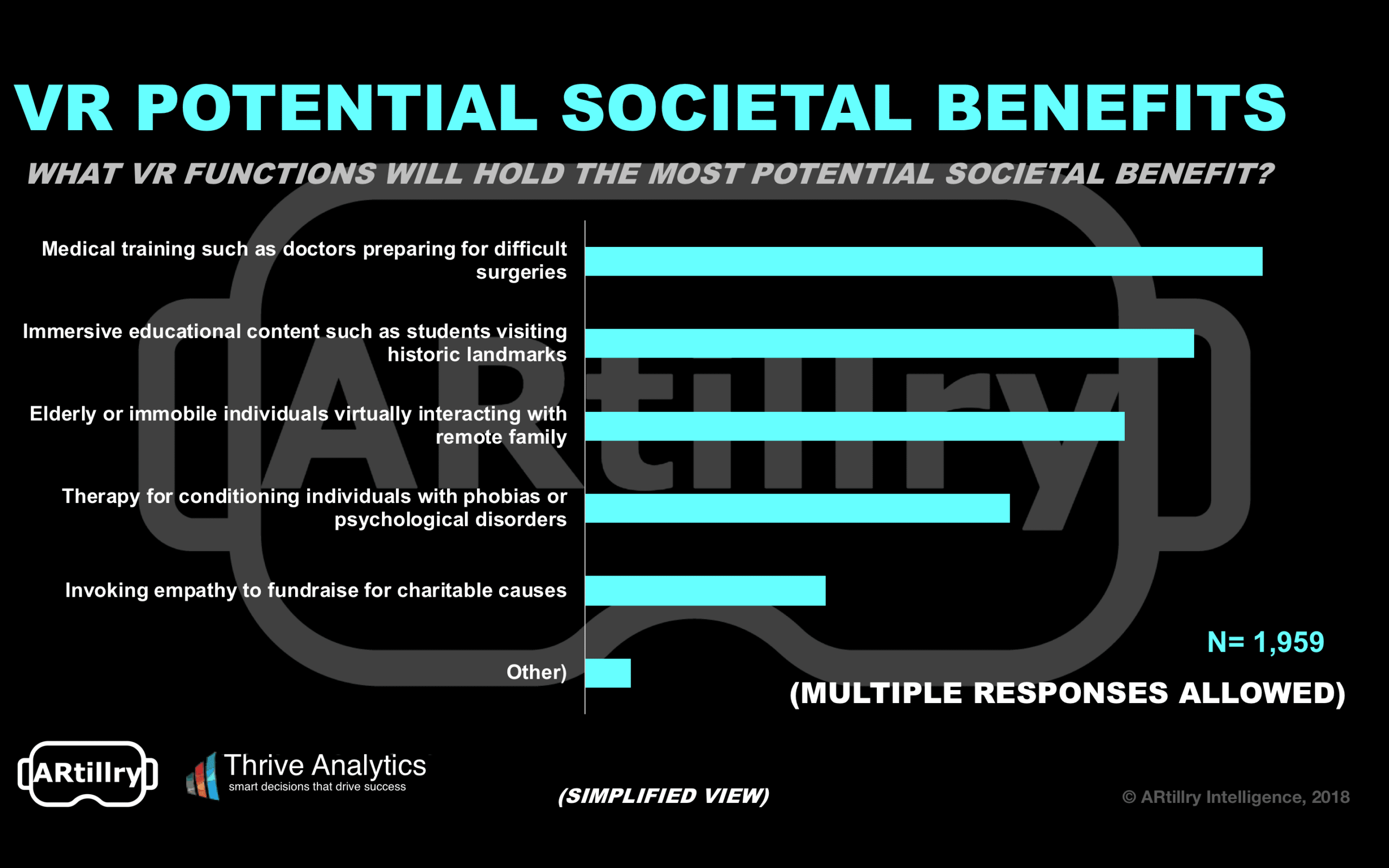
As for more altruistic VR applications – those that serve a greater good rather than a personal need – respondents rated medical training as the top use case. That was followed by education, communications for the elderly and mental therapy/conditioning. None of these were surprising.
Bottom line: these results in totality should inform VR’s points of intersection with existing business. For example, online travel, car shopping, and sports broadcasters should examine these sentiments when designing product road maps and long-term evolution.
For more, preview the report or subscribe to access the entire thing.
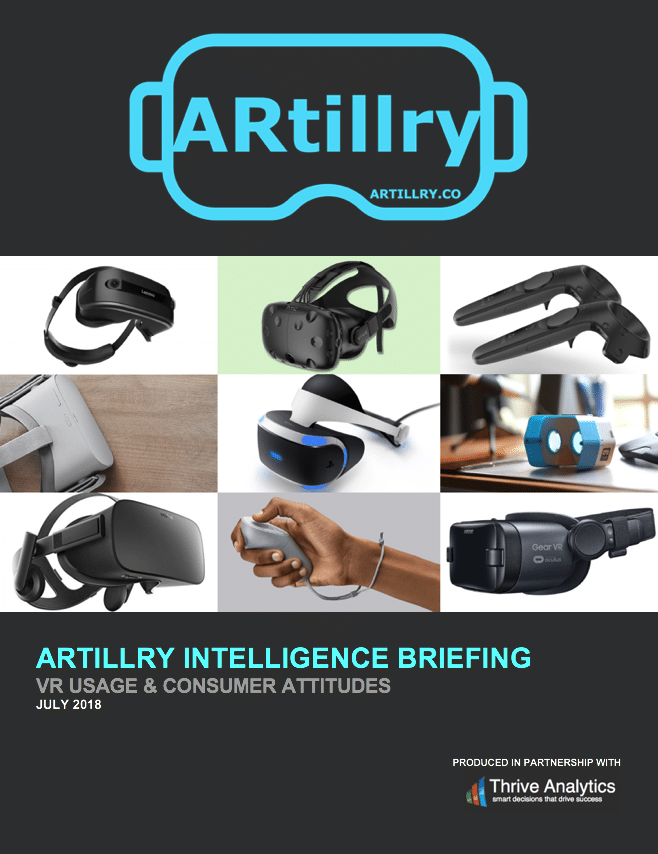
For a deeper dive on AR & VR insights, see ARtillry’s new intelligence subscription, and sign up for the free ARtillry Weekly newsletter.
Disclosure: ARtillry has no financial stake in the companies mentioned in this post, nor received payment for its production. Disclosure and ethics policy can be seen here.
